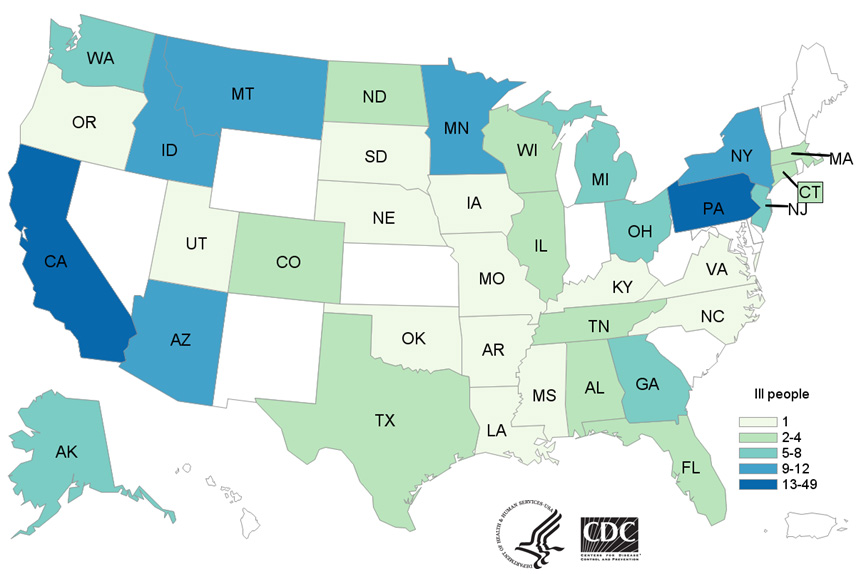The Centers for Disease Control and Prevention (CDC) reported Thursday that the E. coli O157:H7 outbreak linked to romaine lettuce is over. According to the Food and Drug Adminitsration (FDA), the last shipments of romaine lettuce from the Yuma growing region were harvested on April 16, 2018, and the harvest season there has ended. Contaminated lettuce that made people sick in this outbreak should no longer be available.

In total, 210 cases were reported from 36 states. Ninety-six people required hospitalization and 5 people died–Arkansas, California, Minnesota (2), and New York.
The outbreak also affected our neighbors to the north with eight Canadian illnesses reported in five provinces: British Columbia (1), Alberta (1), Saskatchewan (2), Ontario ( 3), and Quebec (1).
FDA Commissioner Scott Gottlieb, M.D. elaborated on the outbreak investigation the same day it was declared over:
The FDA, the CDC, and Arizona state officials continue to analyze samples from the Yuma region collected in early June and initial results are starting to become available. Several environmental samples of canal water in the area have been found to contain E. coli O157:H7 that genetically match the strain of bacteria that caused the outbreak. We have also identified additional strains of shiga-toxin producing E. coli in collected samples, but initial testing of these isolates indicates they are different than the outbreak strain.
He goes on to say:
These initial positive samples represent another piece of the puzzle. More work needs to be done to determine just how and why this strain of E. coli O157:H7 could have gotten into this body of water and how that led to contamination of romaine lettuce from multiple farms. We, along with our partners, will continue to assess these findings, their meanings, and determine what additional efforts may help us better understand this outbreak. We are committed to continuing to share updates on our progress.
Dr Gottlieb also highlighted the scientific advances, new information technologies and laboratory techniques used to protect the public from outbreaks.
Simply counting outbreaks from year-to-year is not an effective way to determine if the number of outbreaks is increasing, decreasing, remaining steady, or to determine whether our food is getting safer or not. Paradoxically the number of outbreaks may increase since we are now able to identify problems that had previously been invisible to us.
Take advantage of our 4th of July Mattress Sale and save $200 on a luxury DreamCloud mattress.
Related:
- Pakistan travel warning issued due to extensively drug-resistant (XDR) typhoid fever
- Africa: Somalia, DR Congo report more polio cases
- Indiana: First human case of H3N2 variant influenza reported since 2013
- Norway releases 2017 chlamydia numbers after 7-Eleven ad: Incidence has been stable over the past decade
- Karachi man becomes 3rd Naegleria death of the year
- Wish-Bone House Italian Salad Dressing recalled due to undeclared milk and egg


5 thoughts on “Romaine lettuce E. coli outbreak over, Understanding the outbreak”